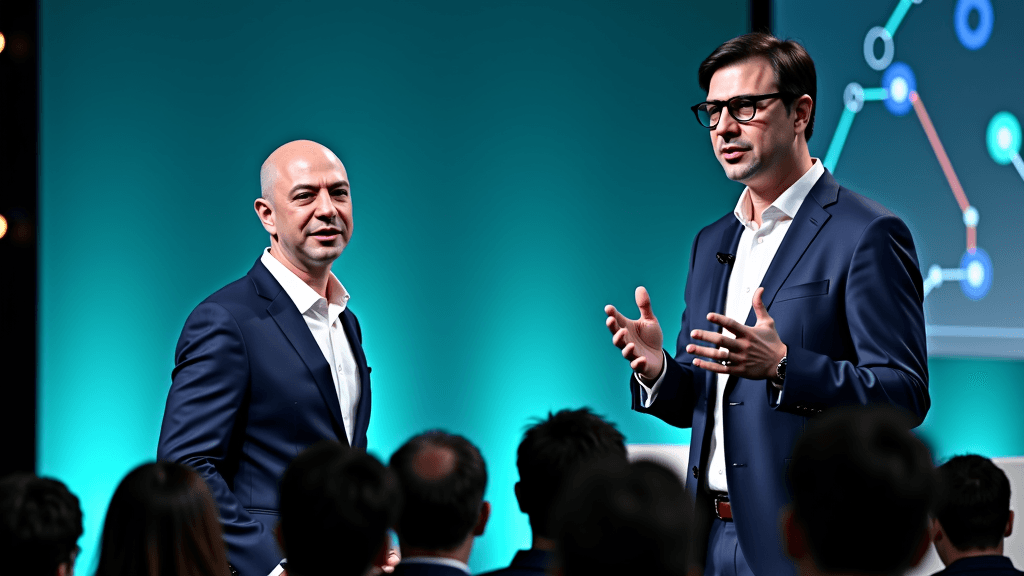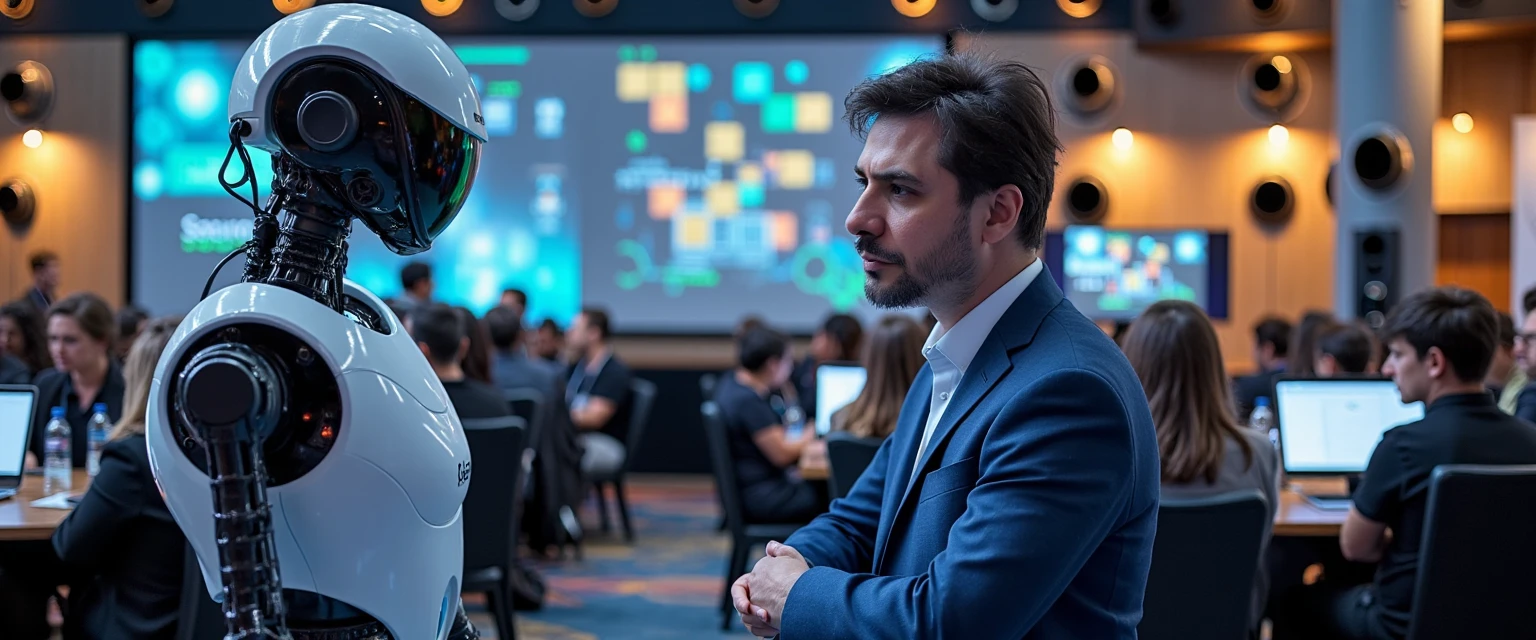Sora 2 Becomes a Phenomenon as Experts Warn of R$ ‘Mess’ 23 Billion - Why This Paradox Defines AI's Moment of Real Maturity
October 19, 2025 | by Matos AI

While OpenAI's Sora 2 becomes the most downloaded application with its revolutionary ability to create realistic videos from text, Brazilian experts are issuing a strong warning: “AI is no magic wand and projects today are a mess”.
This contrast between public fascination and the reality behind the scenes reveals something much deeper about the current state of artificial intelligence in Brazil and around the world.
The Paradox of Mass Adoption vs. Problematic Implementation
The figures are impressive and contradictory. 56% of Brazilian teachers already use AI in teaching activities, This puts the country above the average for OECD countries. At the same time, 65.3% of Brazilians have already used an AI resource, but 95.5% defend ethical limits.
Join my WhatsApp groups! Daily updates with the most relevant news in the AI world and a vibrant community!
- AI for Business: focused on business and strategy.
- AI Builders: with a more technical and hands-on approach.
Here we have the first important insight: adoption does not guarantee effective implementation. In my work with companies from a wide range of sectors, I see that many organizations implement AI without even understanding what problem they want to solve.
Sol Rashidi, an American consultant specializing in AI projects, got straight to the point: MIT studies indicate that 95% of AI projects do not deliver the desired return, with many stagnating at the proof of concept.
The Sora Phenomenon 2: Real Democratization or More Hype?
THE Sora 2 represents a genuine step forward. The tool allows you to create videos with enhanced physical realism, synchronized audio and social features similar to TikTok and Instagram. It's literally a “movie studio on a cell phone”.
But here's the thing: technological innovation is not automatically democratization. Although initially restricted to the US and Canada, Brazilians are already finding ways to access it via VPNs and national aggregators. This shows our characteristic adaptability, but also reveals the limitations of equitable access to technology.
In my immersive courses, I always emphasize that the real value of AI is not in the tool itself, but in the ability to integrate this technology into processes that generate real value.
Practical Use Cases That Work
While we discuss the hype, practical cases show the way. O Panvel Group has launched Sofia, a virtual assistant that allows complete purchases via WhatsApp. The tool already accounts for 68% of the contacts in the SAC and carries out around 3,000 daily interactions.
THE Folha de S. Paulo has created a free AI to correct ENEM essays, These examples are based on exercises from the best-performing school in the country. These examples show AI solving real, specific problems.
The R$ 23 Billion Alert: Investment or Waste?
The Brazilian government has announced an investment of R$ 23 billion in AI by 2028, However, experts warn that without clear rules to protect intellectual property, the country could lose out to large foreign companies.
Ticiano Gadelha, from the Brazilian Intellectual Property Association, made a crucial point: without protecting local creators, we run the risk of turning Brazil into a laboratory for foreign corporations.
This is exactly the kind of discussion we should be having. There's no point in investing heavily if we don't create the structural conditions for this innovation to effectively benefit the country.
The AI Bubble: Reality or Paranoia?
The warnings are multiplying. Experts say the AI market could be forming the biggest and most dangerous bubble in history, with a market value of almost US$ 1 trillion over the last 12 months.
Julien Garran, of the MacroStrategy Partnership, points to limitations in commercial innovation and high rising costs for significant advances. Interestingly, Ray Dalio warned of the AI bubble and days later revealed that he was creating his own “digital clone”.
This contradiction is revealing: even those who criticize the hype recognize the transformative potential of technology.
Brazilian Protagonism in Education
Here we have cause for pride and concern. UFMG researchers stress that the use of AI in teaching is a “path of no return”, but full of ethical challenges.
The impressive statistic: 80.1% of Brazilians up to the age of 44 use AI, compared to 45.4% over the age of 45. This generational divide isn't just a statistic; it's a map of the inequalities we need to address.
The debate in higher education reveals important tensions. Tarcízio Silva warns of precarious teaching conditions, inequalities and the reproduction of biases. Rafael Cardoso advocates pragmatic use and encouraging national solutions.
Regulation: Urgency or Precipitation?
The UFC has already regulated the use of AI in academic work by requiring a declaration. But effective regulation goes beyond bureaucratic protocols. It needs to balance innovation, ethics and inclusion.
Inspiring Cases: AI Solving Real Problems
In addition to the examples of Panvel and Folha, we see the Spotify creating standards to credit AI in music, establishing transparency in artistic creation.
Even seemingly trivial applications have value: AI helping to visualize Rio without tangled wires can influence urban policies and enhance tourism.
What This Moment Reveals
We are living through the transition from experimental AI to applied AI. The hype continues, but it now coexists with consolidated use cases and well-founded warnings about inadequate implementation.
The signs of maturity are clear:
- Ethical discussions become mainstream
- Regulations gain urgency
- Specific use cases multiply
- Bubble warnings coexist with massive investments
- Professionals demand transparency and limits
Three Lessons for Leaders and Companies
1. Problem Before the Tool: As Sol Rashidi warned, many companies implement AI without defining the problem. Always start with the real need, not the available technology.
2. Ethics as a Competitive Differential: 95% of Brazilians want ethical limits in AI. Companies that prioritize transparency and accountability will have an advantage in the long term.
3. Capacity building is strategic: With 56% of Brazilian teachers using AI, those who don't invest in digital literacy will be left behind. But training goes beyond using tools; it includes critical thinking about when and how to use them.
The Future Is Now, But With Planning
The current state of AI in Brazil reminds me of the early days of the commercial internet: a lot of enthusiasm, a few brilliant cases, a lot of confusion and the certainty that there's no going back.
The difference is that we now have data, precedents and the chance to learn from other people's mistakes. Survey shows Brazilians want innovation with responsibility - a combination that could position us as leaders in ethical AI.
In my consulting work and mentoring programs, I help executives and companies navigate exactly this paradox: how to harness the transformative potential of AI without falling into the traps of uncontrolled hype.
The time is ripe for choices. We can be part of the “mess” that wastes R$ 23 billion, or we can build an AI ecosystem that is a global benchmark for effectiveness and responsibility.
The technology is available. The question is: are we prepared to use it wisely?
✨Did you like it? You can sign up to receive 10K Digital's newsletters in your email, curated by me, with the best content about AI and business.
➡️ Join the 10K Community here
RELATED POSTS
View all



